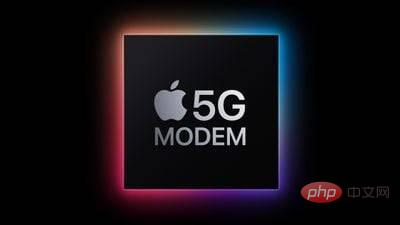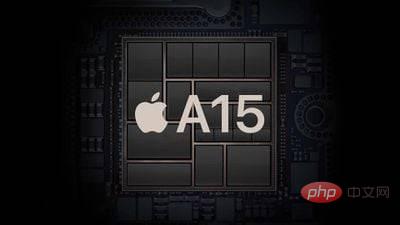Everything we know about the 2022 iPad Air, coming in March
Apple is developing an updated version of the iPad Air, and the new tablet will be launched this spring at an event expected to be held on March 8.

Design
The iPad Air is expected to look identical to the current model, with no outward design changes planned. Apple may introduce new color options to differentiate the updated models from the existing iPad Air, which comes in silver, space gray, rose gold, green, and sky blue.

Like the iPad Pro, the iPad Air has a full-screen design but does not include Face ID. Apple uses the Touch ID power button for authentication instead. The tablet will continue to feature Touch ID and will feature a 10.9-inch display and a USB-C port.
While no physical changes are expected, the iPad Air will adopt features first introduced in its sister tablet, the iPad mini 6.
5G Connectivity
Like the latest iPad mini, the updated iPad Air will feature a 5G chip, allowing it to connect to 5G networks. The chip in the iPad mini is limited to sub-6GHz 5G networks, rather than the fastest mmWave 5G networks, so it's possible we'll see the same limitations in the iPad Air, but there's no guarantee.

Sub-6GHz 5G is the more widely available version of 5G and can be found in urban, suburban, and rural areas across the United States and other countries, while mmWave 5G is more limited in availability and range.
AT&T and Verizon have recently expanded their 5G networks using C-band spectrum, which has increased the availability of millimeter wave networks in the United States, so Apple may take this into account when updating the iPad Air.
Updated Processor
We expect the iPad Air to get the same 6-core A15 chip found in the iPad mini 6 and iPhone 13 series. Apple downclocked the A15 chip in the iPad mini so it runs at 2.9GHz instead of the 3.2GHz in the iPhone, but it's unclear whether the iPad Air will use the same clock speed.

With the downclocked A15, the iPad mini is about 2% to 8% slower than the iPhone 13 in terms of CPU performance, but either way it will be better than the current model A14 Chips have improved.
Center Stage and FaceTime Camera
Rumor has it that the iPad Air will feature an updated 12-megapixel ultrawide front-facing camera that will work with Center Stage, a feature that first came to the iPad Pro Introduced in iPad mini 6.

Center Stage is a FaceTime feature designed to keep you focused and perfectly framed during a FaceTime video call. The wide-angle front-facing camera shows more of the room you're in, and the processor inside the iPad keeps you front and center as you move around.
If more than one person is involved in the call, the camera will zoom out to try to keep everyone in view and ensure they are part of the conversation. Although designed with FaceTime in mind, Center Stage also works with other third-party video apps like Zoom.
As for the rear camera, it is expected to continue with a single-lens setup, although Apple may add a quad-LED True Tone flash, which would be a new addition since the current iPad Air does not include a flash option.
Other Features
We don’t expect any other notable changes to the iPad Air. Since the body design remains the same, we're unlikely to see any major updates to battery life.

USB-C support will continue to be included and will be compatible with Apple accessories including the Magic Keyboard and Apple Pencil 2.
Price
Pricing for the iPad Air is not expected to change and is likely to be the same as the current iPad Air pricing. Current models start at $599 for 64GB of storage and $749 for 256GB. We haven't heard rumors of storage changes, and the iPad mini 6 also starts with 64GB of storage.
Release Date
Rumor has it that the updated iPad Air will be released alongside an updated version of the iPhone SE at an event scheduled for March. Currently, Apple plans to hold the event on Tuesday, March 8.
The above is the detailed content of Everything we know about the 2022 iPad Air, coming in March. For more information, please follow other related articles on the PHP Chinese website!

Hot AI Tools

Undresser.AI Undress
AI-powered app for creating realistic nude photos

AI Clothes Remover
Online AI tool for removing clothes from photos.

Undress AI Tool
Undress images for free

Clothoff.io
AI clothes remover

Video Face Swap
Swap faces in any video effortlessly with our completely free AI face swap tool!

Hot Article

Hot Tools

Notepad++7.3.1
Easy-to-use and free code editor

SublimeText3 Chinese version
Chinese version, very easy to use

Zend Studio 13.0.1
Powerful PHP integrated development environment

Dreamweaver CS6
Visual web development tools

SublimeText3 Mac version
God-level code editing software (SublimeText3)

Hot Topics
 1389
1389
 52
52
 What is the reason why PS keeps showing loading?
Apr 06, 2025 pm 06:39 PM
What is the reason why PS keeps showing loading?
Apr 06, 2025 pm 06:39 PM
PS "Loading" problems are caused by resource access or processing problems: hard disk reading speed is slow or bad: Use CrystalDiskInfo to check the hard disk health and replace the problematic hard disk. Insufficient memory: Upgrade memory to meet PS's needs for high-resolution images and complex layer processing. Graphics card drivers are outdated or corrupted: Update the drivers to optimize communication between the PS and the graphics card. File paths are too long or file names have special characters: use short paths and avoid special characters. PS's own problem: Reinstall or repair the PS installer.
 How to solve the problem of loading when PS is always showing that it is loading?
Apr 06, 2025 pm 06:30 PM
How to solve the problem of loading when PS is always showing that it is loading?
Apr 06, 2025 pm 06:30 PM
PS card is "Loading"? Solutions include: checking the computer configuration (memory, hard disk, processor), cleaning hard disk fragmentation, updating the graphics card driver, adjusting PS settings, reinstalling PS, and developing good programming habits.
 How to speed up the loading speed of PS?
Apr 06, 2025 pm 06:27 PM
How to speed up the loading speed of PS?
Apr 06, 2025 pm 06:27 PM
Solving the problem of slow Photoshop startup requires a multi-pronged approach, including: upgrading hardware (memory, solid-state drive, CPU); uninstalling outdated or incompatible plug-ins; cleaning up system garbage and excessive background programs regularly; closing irrelevant programs with caution; avoiding opening a large number of files during startup.
 Is slow PS loading related to computer configuration?
Apr 06, 2025 pm 06:24 PM
Is slow PS loading related to computer configuration?
Apr 06, 2025 pm 06:24 PM
The reason for slow PS loading is the combined impact of hardware (CPU, memory, hard disk, graphics card) and software (system, background program). Solutions include: upgrading hardware (especially replacing solid-state drives), optimizing software (cleaning up system garbage, updating drivers, checking PS settings), and processing PS files. Regular computer maintenance can also help improve PS running speed.
 How to solve the problem of loading when the PS opens the file?
Apr 06, 2025 pm 06:33 PM
How to solve the problem of loading when the PS opens the file?
Apr 06, 2025 pm 06:33 PM
"Loading" stuttering occurs when opening a file on PS. The reasons may include: too large or corrupted file, insufficient memory, slow hard disk speed, graphics card driver problems, PS version or plug-in conflicts. The solutions are: check file size and integrity, increase memory, upgrade hard disk, update graphics card driver, uninstall or disable suspicious plug-ins, and reinstall PS. This problem can be effectively solved by gradually checking and making good use of PS performance settings and developing good file management habits.
 How to use mysql after installation
Apr 08, 2025 am 11:48 AM
How to use mysql after installation
Apr 08, 2025 am 11:48 AM
The article introduces the operation of MySQL database. First, you need to install a MySQL client, such as MySQLWorkbench or command line client. 1. Use the mysql-uroot-p command to connect to the server and log in with the root account password; 2. Use CREATEDATABASE to create a database, and USE select a database; 3. Use CREATETABLE to create a table, define fields and data types; 4. Use INSERTINTO to insert data, query data, update data by UPDATE, and delete data by DELETE. Only by mastering these steps, learning to deal with common problems and optimizing database performance can you use MySQL efficiently.
 Can mysql run on android
Apr 08, 2025 pm 05:03 PM
Can mysql run on android
Apr 08, 2025 pm 05:03 PM
MySQL cannot run directly on Android, but it can be implemented indirectly by using the following methods: using the lightweight database SQLite, which is built on the Android system, does not require a separate server, and has a small resource usage, which is very suitable for mobile device applications. Remotely connect to the MySQL server and connect to the MySQL database on the remote server through the network for data reading and writing, but there are disadvantages such as strong network dependencies, security issues and server costs.
 Is PS slow loading related to other programs that are running?
Apr 06, 2025 pm 06:03 PM
Is PS slow loading related to other programs that are running?
Apr 06, 2025 pm 06:03 PM
The secrets to mastering Office software include: understanding different versions and platforms, correctly installing and configuring, proficient in using the software interface, in-depth understanding of feature operations, application collaboration and sharing functions, utilizing templates and styles, mastering advanced skills, and solving common problems. In addition, you need to choose a version that suits your needs, make good use of templates and styles, develop backup habits, and learn shortcut keys and advanced techniques to improve efficiency.



